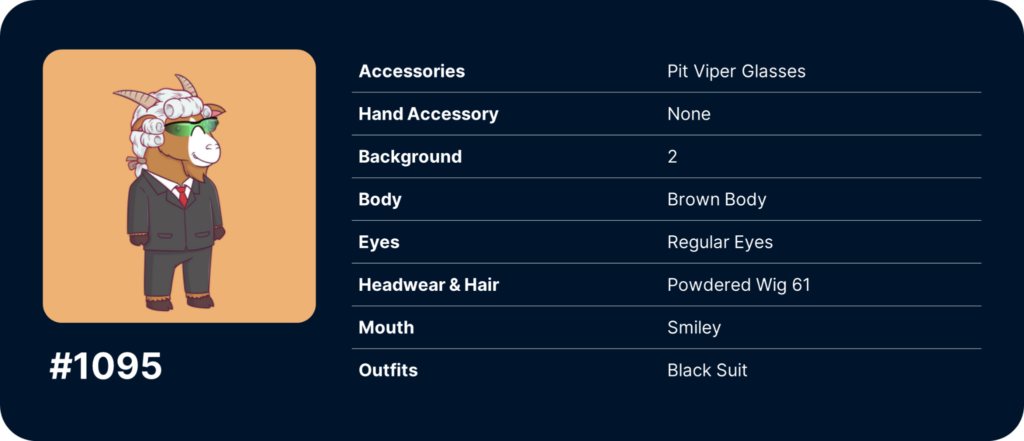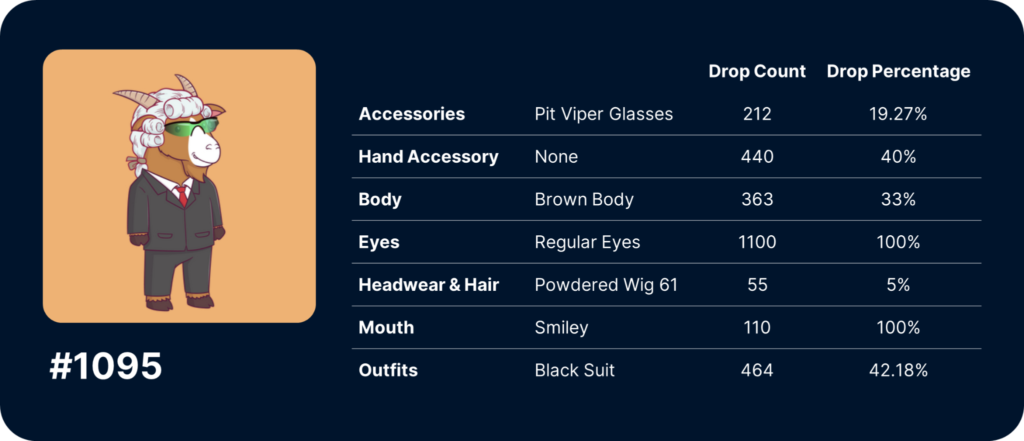Check The Rarity of Your ESQ PFP
What Are JTC ESQ Ordinals?
The JTC ESQ Ordinals are a limited collection of 1,100 PFPs that were airdropped to the most active and loyal members of the Jurat community, following the Esquire’s Airdrop. These PFPs have been minted in order to show the true “OGs” within the Jurat community. If you want to mint your own JTC Ordinal, check out our how-to-mint guide.

Rarities And JTC Ordinals Explained
Rarity refers to the uniqueness and scarcity of a digital asset represented as a non-fungible token (NFT) or Ordinal. Every asset holds distinctive characteristics, making it one-of-a-kind in the blockchain, hence the term ‘non-fungible.’ Rarity factors may include specific features, limited editions, or unique attributes contributing to the token’s individual value and desirability within the digital art space.
The Key Features Of Your JTC Ordinal
Once you’ve received your JTC ESQ Ordinal, you’ll want to check the rarity of its various traits. There are four trait categories for you to consider when calculating the rarity of your PFP, they are the following:
This refers to the category of a trait such as a background, body, mouth, outfits & headwear, or hand accessory.
This describes the trait such as a graying beard, brown body, black suit, or attorney robe. Your Ordinal may have just one trait or several.
The number of times the trait appears within the collection of 1,100 Ordinals.
The number of times the trait appears in the collection represented as a percentage.
How To Check Your ESQ’s Rarity
1. Identifying Your Ordinal’s Token ID
- Open your Jurat Wallet.
- Press on ‘Ordinals’
- Press on your Ordinal.
- Find your Ordinal’s ‘Royalty Percentage’.
- This figure represents the token ID so for example, if the royalty percentage is 1095.0%, then your Ordinal’s ID is 1095.
2. Identifying Your Ordinal’s Traits
To identify the individual traits of your Ordinal, you need to follow these steps:
- Copy the following link into your browser and add your token ID between the brackets https://esquires.jurat.network/(TOKENID).json
- Once you’ve added your token ID, the link should look like this https://esquires.jurat.network/1095.json
- The information displayed by your browser may appear confusing at first, but if we refer to the information about the four key traits, it will make sense.
In the case of #1095, we can see that it has the following traits:

You can double-check your Ordinal’s traits by using the JTC Ordinal explorer and comparing the image to your list of traits.

3. Calculating The Rarity of your JTC Ordinal
Let’s use #1095 as an example.

FAQ: Frequently Asked Questions
ESQ Ordinals are a collection of 1,100 JTC Ordinals airdropped to active and loyal members of the Jurat community who successfully participated in the JTC ESQ airdrop campaign. These colorful goats have a variety of traits that pay homage to the legal3 aspirations of Jurat and dictate their overall rarity.
The best way to check your JTC Ordinals collection is to open up your Jurat wallet and press the Ordinals button. All your Ordinals will be displayed here. If your Ordinal doesn’t appear, use the JTC explorer to check all the assets held on your address.
What People Are Saying About Us
One of the most innovative and visionary proposals… The revolutionary implications of having changing legal criteria acknowledged and acted upon through smart contracts is groundbreaking.
Once the mass population believes that their rights could be protected and enforced on the blockchain, the mainstream adoption of blockchain would be underway.
[Jurat] will provide a very strong competition to the ‘code is law’ philosophy when deciding whether to side with a court order or with a smart contract’s ‘blind justice’ by just doing what it was programmed to do.
Contact Us
Get In Touch


